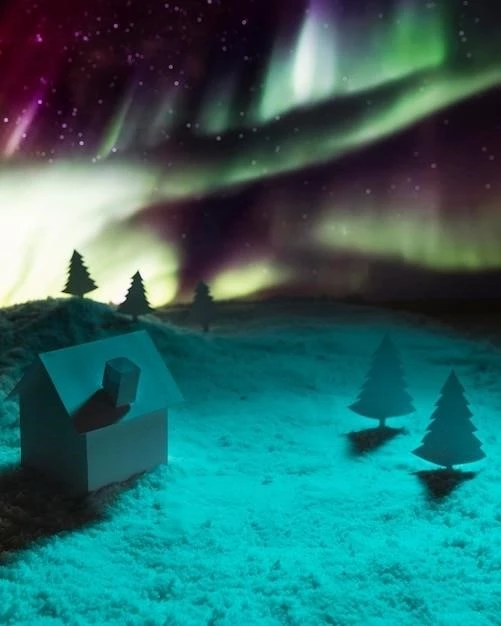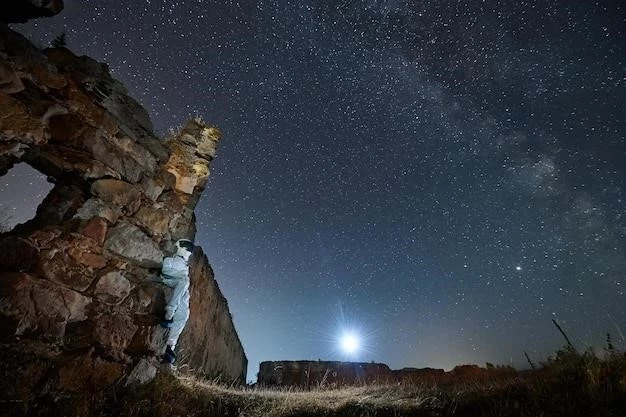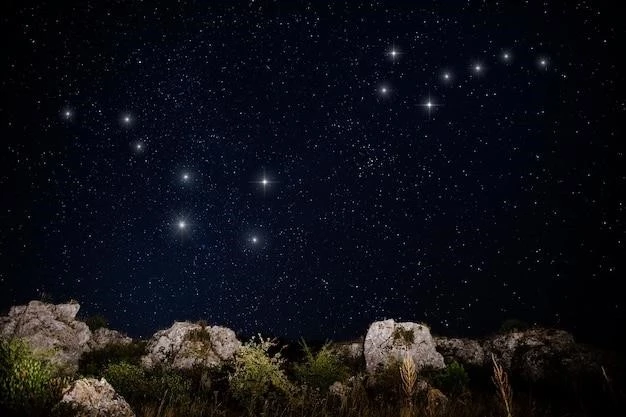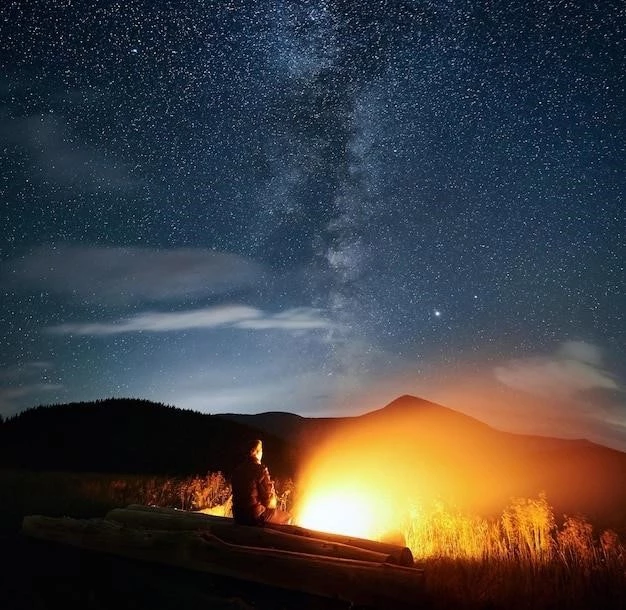Dark Sky Parks
Dark Sky Parks are specifically recognized for their exceptional nocturnal skies and protected environments for stargazing. Certified by the International Dark-Sky Association (IDA), these parks offer visitors an unparalleled opportunity to experience the wonders of the cosmos. These areas have undergone rigorous measures to minimize light pollution, making them ideal for observing celestial objects like the Milky Way, meteor showers, and distant planets.
Dark Sky Communities
Beyond the boundaries of designated Dark Sky Parks, a growing number of communities around the world are making strides to preserve the beauty of the night sky by becoming certified Dark Sky Communities. These towns and cities have demonstrated a strong commitment to reducing light pollution and promoting responsible outdoor lighting practices. Recognized by the International Dark-Sky Association (IDA), Dark Sky Communities offer residents and visitors alike the opportunity to experience the wonders of a star-filled sky while enjoying the comforts and amenities of a vibrant community.
Dark Sky Communities are characterized by their implementation of comprehensive lighting ordinances and community engagement initiatives. These ordinances typically address various aspects of outdoor lighting, including the types of fixtures used, the direction and intensity of light, and the duration of illumination. By minimizing unnecessary artificial light and ensuring that outdoor lighting is shielded and directed downward, these communities effectively reduce light trespass and sky glow, preserving the darkness of the night sky.
The benefits of becoming a Dark Sky Community extend far beyond just stargazing. Reduced light pollution has been linked to numerous environmental, health, and economic advantages. For instance, by minimizing artificial light at night, Dark Sky Communities create a more favorable habitat for nocturnal wildlife, reduce energy consumption and associated costs, and promote human health by minimizing disruptions to our natural sleep-wake cycles.
Moreover, Dark Sky Communities often become hubs for astro-tourism, attracting visitors from far and wide who are eager to experience the magic of a starry night sky. This influx of visitors can provide a significant boost to local economies, supporting businesses such as hotels, restaurants, and tour operators specializing in stargazing experiences.
The commitment of Dark Sky Communities to preserving the night sky is a testament to the growing awareness of the importance of darkness as a natural resource. As more communities around the world embrace responsible lighting practices, we can collectively protect the beauty of the night sky for generations to come, while also reaping the numerous benefits associated with reduced light pollution.

Dark Sky Sanctuaries
Representing some of the most remote and pristine skies on Earth, Dark Sky Sanctuaries are designated by the International Dark-Sky Association (IDA) as areas possessing exceptional starry nights and nocturnal environments, specifically protected for their scientific, natural, or cultural value. These sanctuaries are often found in locations with limited access to public infrastructure and are characterized by their extraordinary commitment to preserving the darkness of the night sky.
The designation of Dark Sky Sanctuaries is reserved for areas with the most fragile and threatened dark skies, where conservation efforts are paramount to ensuring their long-term protection. These sanctuaries often face unique challenges, such as their remote location, limited resources, and the potential impact of activities outside their boundaries. To address these challenges, Dark Sky Sanctuaries typically have robust management plans in place to mitigate light pollution and promote responsible lighting practices within their surrounding regions.
The exceptional darkness found within Dark Sky Sanctuaries provides unparalleled opportunities for astronomical research, allowing scientists to observe celestial objects and phenomena with minimal interference from artificial light. Moreover, these sanctuaries serve as vital havens for nocturnal wildlife, whose natural behaviors and rhythms are intricately linked to the cycles of darkness. The preservation of these dark environments is crucial for maintaining the ecological balance of these sensitive ecosystems.
For those seeking an immersive and awe-inspiring stargazing experience, Dark Sky Sanctuaries offer a glimpse into the pristine beauty of the cosmos, untouched by the intrusive glow of artificial light. Visiting a Dark Sky Sanctuary is an opportunity to connect with the vastness of the universe and appreciate the importance of preserving our planet’s natural heritage.
As we continue to illuminate our world, the existence of Dark Sky Sanctuaries becomes ever more critical in reminding us of the intrinsic value of darkness. These sanctuaries serve as beacons of hope, demonstrating that it is possible to coexist with nature while safeguarding the celestial wonders that have captivated humanity for millennia.

International Dark Sky Week Events
International Dark Sky Week, a global initiative held annually during the week of the new moon in April, offers a unique opportunity to celebrate the splendor of the night sky and raise awareness about the importance of dark sky preservation. During this week-long celebration, organizations, communities, and individuals around the world host a variety of events and activities aimed at promoting understanding of light pollution and inspiring action to protect our shared nocturnal environment.
International Dark Sky Week events cater to a diverse range of interests and age groups, offering something for everyone passionate about the cosmos. Stargazing parties, often held in collaboration with local astronomy clubs and observatories, provide participants with the opportunity to observe celestial wonders through telescopes and learn from experienced astronomers. Educational workshops and presentations delve into the science of light pollution, its impact on wildlife and human health, and practical solutions for mitigating its effects.
For those seeking a more hands-on approach, International Dark Sky Week offers a platform for community engagement and advocacy. Citizen science projects, such as night sky brightness measurements, allow individuals to contribute valuable data to ongoing research efforts. Community outreach programs, including presentations at schools and local events, raise awareness about light pollution and encourage the adoption of responsible lighting practices.
The impact of International Dark Sky Week extends far beyond the week itself. By fostering a sense of wonder and appreciation for the night sky, the initiative inspires individuals to become stewards of this precious natural resource. The knowledge and awareness gained during this week-long celebration empower communities to implement sustainable lighting solutions, protect wildlife habitats, and create healthier environments for all.
Whether you are an avid astronomer, a nature enthusiast, or simply someone who appreciates the beauty of a starry night, International Dark Sky Week offers a unique opportunity to connect with the cosmos and join a global movement dedicated to preserving the darkness of the night sky for generations to come.
Planning Your Stargazing Trip
Embarking on a stargazing adventure promises an awe-inspiring experience, connecting you to the vastness of the cosmos and the wonders of the night sky. Whether you are a seasoned astronomer or a novice stargazer, meticulous planning is essential for a successful and memorable trip. By carefully considering factors such as destination selection, weather conditions, moon phases, and essential gear, you can maximize your chances of witnessing the celestial tapestry in all its glory.
Begin by researching potential destinations renowned for their dark skies and exceptional stargazing opportunities. Dark Sky Parks, recognized by the International Dark-Sky Association (IDA), offer pristine environments with minimal light pollution, providing optimal conditions for celestial observation. Consult online resources, stargazing apps, and astronomical societies for recommendations tailored to your interests and geographic location.
Once you have chosen your destination, consult weather forecasts and astronomical calendars to determine the most favorable time for your trip. Clear skies are paramount for optimal stargazing, so aim for dates with minimal cloud cover and precipitation. Consider moon phases as well, as a new moon or a waning crescent moon will minimize moonlight interference, allowing fainter celestial objects to shine through.
Thorough research and meticulous planning are crucial for a rewarding stargazing experience. By selecting the right destination, understanding the nuances of weather and moon phases, packing essential gear, and prioritizing safety, you can create lasting memories under the celestial canopy. Embrace the wonders of the night sky, and let your curiosity guide you on an unforgettable journey through the cosmos.
Remember to respect the environment and adhere to Leave No Trace principles when venturing into natural areas for stargazing. Pack out everything you pack in, minimize noise pollution, and be mindful of wildlife and their habitats. By being responsible stewards of our planet, we can ensure that future generations have the opportunity to experience the awe-inspiring beauty of a pristine night sky.
Essential Gear for Stargazing
Preparing for a successful stargazing expedition requires assembling an essential toolkit that enhances your viewing experience and ensures comfort during your nocturnal adventure. From optical instruments to navigational aids and essential comfort items, careful consideration of your gear can significantly impact your ability to navigate the night sky and appreciate the celestial wonders above.
Optical Instruments:
A pair of binoculars or a telescope can significantly enhance your stargazing experience, revealing celestial objects in greater detail. Binoculars are a versatile option for beginners, offering a wider field of view ideal for observing star clusters and constellations; Telescopes, on the other hand, provide higher magnification, allowing for more detailed observations of planets, galaxies, and nebulae. Choose an instrument that aligns with your experience level and observing goals.
Navigation and Identification:
A star chart, planisphere, or mobile astronomy app can be invaluable tools for navigating the night sky and identifying constellations, stars, and planets. These resources provide a roadmap of the celestial sphere, helping you locate specific objects of interest. Additionally, a red-light flashlight is essential for preserving your night vision while consulting charts or making adjustments to your equipment.
Comfort and Convenience:
Stargazing often involves extended periods outdoors, so prioritize comfort and warmth. Dress in layers, as temperatures can drop significantly at night, and consider a warm hat, gloves, and a blanket or chair for added comfort. A thermos of hot beverage and snacks can provide sustenance during long observing sessions. Finally, a sturdy backpack or carrying case can help organize and transport your gear safely to your stargazing destination.

Tips for Observing the Night Sky
Embarking on a stargazing adventure can be an awe-inspiring experience, connecting you to the vastness of the cosmos and the wonders of the night sky. To maximize your enjoyment and enhance your celestial observations, consider these essential tips for observing the night sky:
Seek Dark Skies:
Light pollution from urban areas can significantly obscure the brilliance of celestial objects. Venture away from city lights to locations with minimal light pollution, such as Dark Sky Parks or rural areas. The darker the skies, the more stars, planets, and other celestial wonders will be revealed.
Check the Weather and Moon Phase:
Clear skies are essential for optimal stargazing. Consult weather forecasts and choose a night with minimal cloud cover and precipitation. Additionally, consider the moon phase. A new moon or a waning crescent moon will minimize moonlight interference, allowing fainter stars and celestial objects to shine through.
Allow Your Eyes to Adapt:
It takes approximately 20-30 minutes for your eyes to fully adapt to darkness٫ enhancing your night vision. Avoid bright lights during this adaptation period٫ and use a red-light flashlight to preserve your night vision while consulting star charts or adjusting equipment.
Use Proper Equipment:
While naked-eye observations can be rewarding, binoculars or a telescope can significantly enhance your stargazing experience. Binoculars provide a wider field of view, ideal for observing star clusters and constellations, while telescopes offer higher magnification for detailed observations of planets, galaxies, and nebulae.
Embrace Patience and Exploration:
Stargazing is a journey of discovery. Embrace patience and allow yourself ample time to observe the night sky. Use star charts, planispheres, or mobile astronomy apps to navigate the celestial sphere and identify constellations, stars, and planets. Explore different areas of the sky and allow yourself to be captivated by the wonders that unfold.

Dark Sky Parks in the United States
The United States boasts a remarkable collection of Dark Sky Parks, designated by the International Dark-Sky Association (IDA) for their exceptional quality of starry nights and commitment to preserving the nocturnal environment. These parks offer unparalleled opportunities to escape light pollution and immerse oneself in the splendor of the cosmos. Here are a few notable Dark Sky Parks in the United States:
Natural Bridges National Monument, Utah:
Home to an array of natural sandstone arches, Natural Bridges National Monument is renowned for its exceptionally dark skies. With minimal light pollution, visitors can witness a breathtaking tapestry of stars, planets, and the Milky Way arching across the sky.
Death Valley National Park, California and Nevada:
As one of the darkest places in the United States, Death Valley National Park offers an otherworldly stargazing experience. The park’s remote location and dry desert air create exceptional viewing conditions, revealing a dazzling display of celestial wonders.
Big Bend National Park, Texas:
Situated along the border of Texas and Mexico, Big Bend National Park is a haven for stargazers. With its remote location and minimal light pollution, the park offers breathtaking views of the Milky Way, constellations, and meteor showers.
Cherry Springs State Park, Pennsylvania:
Located in the heart of Pennsylvania Wilds, Cherry Springs State Park is renowned for its exceptionally dark skies. The park’s astronomy field, atop a 2,305-foot summit, provides unobstructed views of the cosmos.
Glacier National Park, Montana:
Glacier National Park’s pristine wilderness and minimal light pollution make it a stargazing paradise. Visitors can witness a stunning display of stars reflected in alpine lakes, creating an unforgettable nocturnal experience.

Dark Sky Places Around the World
Venturing beyond the borders of the United States, a world of celestial wonders awaits in designated Dark Sky Places, each offering a unique perspective on the cosmos. From remote deserts to pristine mountain ranges, these destinations provide unparalleled opportunities to witness the awe-inspiring beauty of a truly dark sky, unpolluted by artificial light.
Atacama Desert, Chile:
Renowned for its exceptionally dry and clear skies, the Atacama Desert in Chile is a mecca for astronomers and stargazing enthusiasts. Home to numerous world-class observatories, this high-altitude desert offers unparalleled views of the Milky Way, distant galaxies, and celestial phenomena.
NamibRand Nature Reserve, Namibia:
Located in the heart of the Namib Desert, the NamibRand Nature Reserve is a sanctuary for both wildlife and stargazers alike. With its vast open spaces and minimal light pollution, the reserve offers breathtaking panoramic views of the night sky.
Aoraki Mackenzie International Dark Sky Reserve, New Zealand:
Spanning over 4,300 square kilometers, the Aoraki Mackenzie International Dark Sky Reserve in New Zealand is one of the largest in the world. Its pristine skies, combined with stunning alpine scenery, create an unforgettable stargazing experience.
Galloway Forest Park, Scotland:
As the first Dark Sky Park in the United Kingdom, Galloway Forest Park offers a tranquil escape from urban lights. Its remote location and commitment to preserving the nocturnal environment make it an ideal destination for observing the Milky Way, meteor showers, and other celestial events.
Mauna Kea Observatories, Hawaii, USA:
While not a designated Dark Sky Park itself, the summit of Mauna Kea on the Big Island of Hawaii is home to some of the world’s most advanced astronomical observatories. Its high altitude and clear skies provide exceptional viewing conditions, attracting astronomers and stargazers from around the globe.
The Importance of Dark Sky Preservation
The preservation of dark skies extends far beyond the realm of astronomy and encompasses a profound responsibility to safeguard our planet’s delicate ecosystems, human health, and cultural heritage. As artificial light pollution continues to encroach upon the natural night, recognizing the multifaceted importance of dark sky preservation becomes increasingly crucial for the well-being of both present and future generations.
Ecological Integrity:
Countless species of wildlife rely on the natural cycles of darkness and light for their survival. Nocturnal animals, such as owls, bats, and insects, have evolved to navigate and forage under the cover of darkness. Artificial light disrupts these natural rhythms, interfering with feeding patterns, migration routes, and reproductive cycles, ultimately threatening the delicate balance of ecosystems.
Human Health and Well-being:
The human body is governed by a circadian rhythm, an internal clock synchronized with the natural cycles of day and night. Exposure to artificial light at night disrupts this natural rhythm, suppressing melatonin production, a hormone essential for regulating sleep-wake cycles. This disruption can have detrimental effects on sleep quality, mood, hormone levels, and overall health.
Scientific Discovery:
Dark skies are essential for astronomical research and our understanding of the universe. Light pollution obscures faint celestial objects, hindering astronomical observations and scientific discoveries. Preserving dark skies ensures that future generations of astronomers can continue to explore the cosmos and unlock its mysteries.
Recognizing the interconnectedness of dark skies with ecological integrity, human health, and scientific progress underscores the urgency of addressing light pollution and promoting responsible lighting practices. By working together to preserve the natural darkness of the night, we can protect our planet, safeguard human health, and ensure that future generations inherit a world where the wonders of the cosmos continue to inspire awe and wonder.
The Impact of Light Pollution
Light pollution, the excessive or misdirected artificial light at night, has far-reaching consequences that extend beyond obscuring our view of the stars. Its pervasive glow disrupts ecosystems, impacts human health, wastes energy, and obscures our connection to the cosmos. Understanding the multifaceted impact of light pollution is crucial for inspiring action to mitigate its detrimental effects.
Ecological Disruption:
Nocturnal wildlife, adapted to the rhythms of natural darkness, are particularly vulnerable to light pollution. For instance, migratory birds, guided by starlight, can become disoriented by artificial lights, leading to collisions with buildings or deviations from their migratory paths. Sea turtles, relying on moonlight to navigate toward the ocean after hatching, can be misled by artificial lights, leading them astray and jeopardizing their survival.
Human Health Implications:
The human body’s natural sleep-wake cycle, regulated by the hormone melatonin, is disrupted by exposure to artificial light at night. This disruption can suppress melatonin production, leading to sleep disturbances, fatigue, mood disorders, and an increased risk of certain types of cancer. Moreover, excessive nighttime illumination can interfere with the production of other hormones, potentially impacting metabolism, cardiovascular health, and immune function.
Energy Waste and Economic Costs:
Inefficient lighting practices and excessive nighttime illumination contribute significantly to energy waste. Light directed upward into the sky, instead of downward where it is needed, serves no practical purpose and represents a significant waste of energy resources. This unnecessary illumination translates into increased energy consumption, higher utility bills, and a larger carbon footprint.
Dark Sky Tourism
Dark sky tourism, an emerging niche within the travel industry, caters to the growing desire among travelers to experience the awe-inspiring beauty of a pristine night sky. As light pollution increasingly encroaches upon urban and suburban areas, destinations that have made a concerted effort to preserve the natural darkness of their skies are attracting a new breed of stargazing enthusiasts and nature lovers.
Dark sky tourism encompasses a wide range of activities and experiences centered around celestial observation. From guided stargazing tours and astrophotography workshops to overnight stays in remote lodges with unobstructed views of the cosmos, there are countless ways to immerse oneself in the splendor of a truly dark sky. Many destinations have recognized the growing appeal of dark sky tourism and are investing in infrastructure and programs to cater to this niche market.
The benefits of dark sky tourism extend far beyond the economic advantages for local communities. By promoting responsible lighting practices and raising awareness about the importance of dark sky preservation, this burgeoning industry contributes to the conservation of nocturnal ecosystems, the mitigation of light pollution, and the preservation of our cultural heritage. Moreover, dark sky tourism offers travelers a unique opportunity to reconnect with nature, appreciate the vastness of the universe, and gain a deeper understanding of our place within the cosmos.
As more travelers seek authentic and sustainable travel experiences, dark sky tourism is poised for continued growth and diversification. From dedicated stargazing festivals and events to the development of new Dark Sky Places around the world, the opportunities for exploring the cosmos and experiencing the magic of a truly dark sky are expanding, inviting us to rediscover the wonders that have captivated humanity for millennia.










